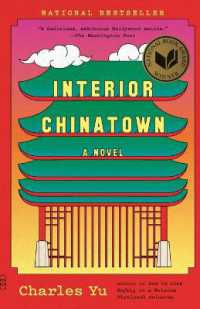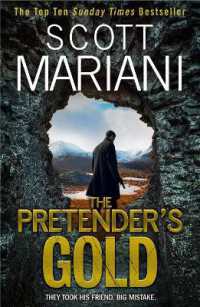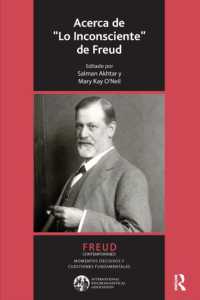Full Description
In Fusion of East and West, Limin Bai presents a major work in the English language that focuses on Chinese textbooks and the education of children for a new China in a critical transitional period, 1902-1915. This study examines the life and work of Wang Hengtong (1868-1928), a Chinese Christian educator, and other Christian and secular writings through a historical and comparative lens and against the backdrop of the socio-political, ideological, and intellectual frameworks of the time. By doing so, it offers a fresh perspective on the significant connection between Christian education, Chinese Christian educators and the birth of a modern educational system. It unravels a cross-cultural process whereby missionary education and the Chinese education system were mutually re-shaped.
Contents
ForewordPrefaceConventionsList of Figures and TablesIntroduction1 Wang Hengtong, the Christian Community in Shanghai and the Textbook Market1 Wang Hengtong and Hangchow Presbyterian College2 Wang Hengtong and the Christian Community in Shanghai3 Wang Hengtong as Christian Teacher and Textbook Writer4 Wang Hengtong and His Literacy Textbooks5 Conclusion2 An Innovative Approach: Progressive Teaching Method1 Background: Literacy Education Campaign in late Qing China2 Wind from the West: Chinese Language Teaching Reform3 Comparison: Wang Hengtong's Primers and Non-Christian Chinese Textbooks4 Conclusion3 Captivating Children: Hybrid Elements in Literacy Textbooks1 Quwei (interest; interesting): the Prevalence of New Educational Ideas2 The Use of Illustrations: with Children's Interests at Heart3 Making Tradition Modern: Re-creating Exemplary Children in Traditional Chinesemengshu4 Conclusion4 Literacy Textbooks as Children's Literature: Making Aesop Chinese1 Aesop's Fables for Literacy Education2 A Comparative Study of Three Chinese Versions of Aesop's Fables3 Contextualizing Aesopic Fables for Chinese Children4 Conclusion5 Textbooks as a Bridge to a World of New Knowledge1 The Concept of Gezhi: a Christian Perspective2 The Content of Gezhi Learning in Wang Hengtong's Textbooks3 The Circulation of Useful Knowledge: a Comparative Analysis4 Conclusion6 Traversing the Boundaries between Confucianism and Christianity1 The Bible and Christian Content in Wang Hengtong's Literacy Textbooks2 New Hermeneutic Exegesis of Ancient Chinese Scriptures: Searching for a Common Humanity3 Reinterpreting the Concept of xiao: Christian Appropriation of Confucianism4 Conclusion7 Education for a New China: a Multifaceted Perspective1 Education for a New China: a Comparison of Christian and Non-Christian Views2 Textbook Market: Shared Source Materials, Common Features and Diversity3 Different Approaches to the Fusion of East-West and Past-Present4 A Key Difference between Christian and Non-Christian Textbooks5 Enlightenment and Late Qing Reforms: Education for Girls6 ConclusionConclusionBibliographyIndex








